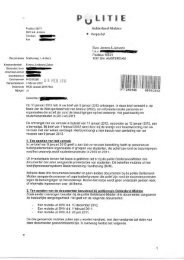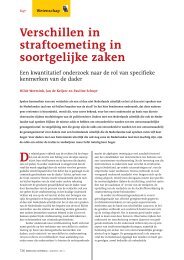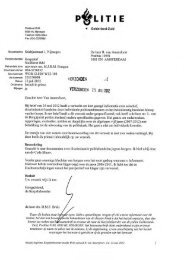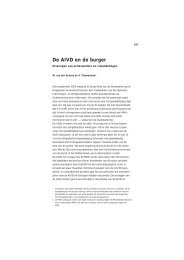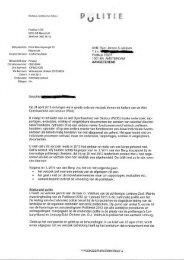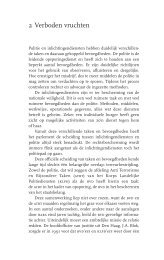Biometrics - Buro Jansen & Janssen
Biometrics - Buro Jansen & Janssen
Biometrics - Buro Jansen & Janssen
You also want an ePaper? Increase the reach of your titles
YUMPU automatically turns print PDFs into web optimized ePapers that Google loves.
that they will communicate with any reader. Tags can also be secure; this means that the<br />
reader has to provide a password or another form of authentication before the tag responds<br />
[Garfinkel, Holtzman, p.18, 2005]. However majority of the tags that are in use are<br />
promiscuous, since they are cheaper. Moreover the systems are also easier to manage. Tags<br />
that use passwords or encryption codes have a difficult management problem, because the<br />
codes need to be distributed in advance and properly controlled.<br />
Readers<br />
The RFID reader reads transmitted data with either a handheld device or one embedded on<br />
the wall. The reader is a read‐only or a read/write device. The reader scans tags and then<br />
forwards the information to the backend [Garfinkel, Holtzman, p. 20, 2005, Jechlitschek, p.5,<br />
2006]. The backend is usually a database. This database can then also be connected to a<br />
company’s Intranet or the Internet. The response sent back contains the tag’s serial number<br />
and generally other information as well. This system behaves in the same way as a barcode<br />
reader; if the reader scans the barcode [at for example the checkout point in the<br />
supermarket] the application uses the derived identifier to lookup the current price. In<br />
addition the backend provides the discount information; it also decreases the amount of<br />
products available and notifies the manager if the number falls below a certain limit.<br />
Implantable RFID Tags<br />
VeriChip is a company specialised in implantable RFID microchips. VeriChip is the first<br />
company in the world to offer such a chip for the purpose of automatic identification. The<br />
FDA has approved the implantable radiofrequency transponder system for patient<br />
identification and health information.<br />
The microchip measures 12 mm long and 2.1 mm in diameter, roughly the size of a grain of<br />
rice. The device is usually implanted above the triceps in the arm or sometimes in the hand.<br />
It is inserted just under the skin and contains a unique 16‐digit identifier. The insertion<br />
procedure is performed under local anaesthetics. An accomplished doctor can complete the<br />
procedure in less than 20 seconds. It is invisible to the eye. The chip doesn’t contain any<br />
other data than the unique electronic ID, nor does it contain any Global Positioning System<br />
[GPS] tracking capabilities. The idea is that with this identification method one cannot lose,<br />
misplace or get one’s ID stolen; one ‘carries’ is always with you. The estimated lifetime of a<br />
VeriChip is over 20 years.<br />
Once it is inserted under the skin with a syringe, via a quick outpatient procedure, the<br />
VeriChip can be scanned with a handheld or wall‐mounted chip reader. The microchip is<br />
passive; this means that the chip will only be activated when a reader with the proper<br />
frequency responds to the dormant chip, which then emits a radio frequency signal,<br />
transmitting the individuals’ unique verification number. This number can be used to<br />
access personal medical information in a password‐protected database or assess whether<br />
someone has authority to enter into for example high‐security areas.<br />
At first 68 hospitals in the US had signed up to adopt the technology in their emergency<br />
rooms, but many have already abandoned the trials because of lack of acceptance and<br />
privacy concerns. VeriChip estimates that around 2000 people currently have a VeriChip<br />
33






